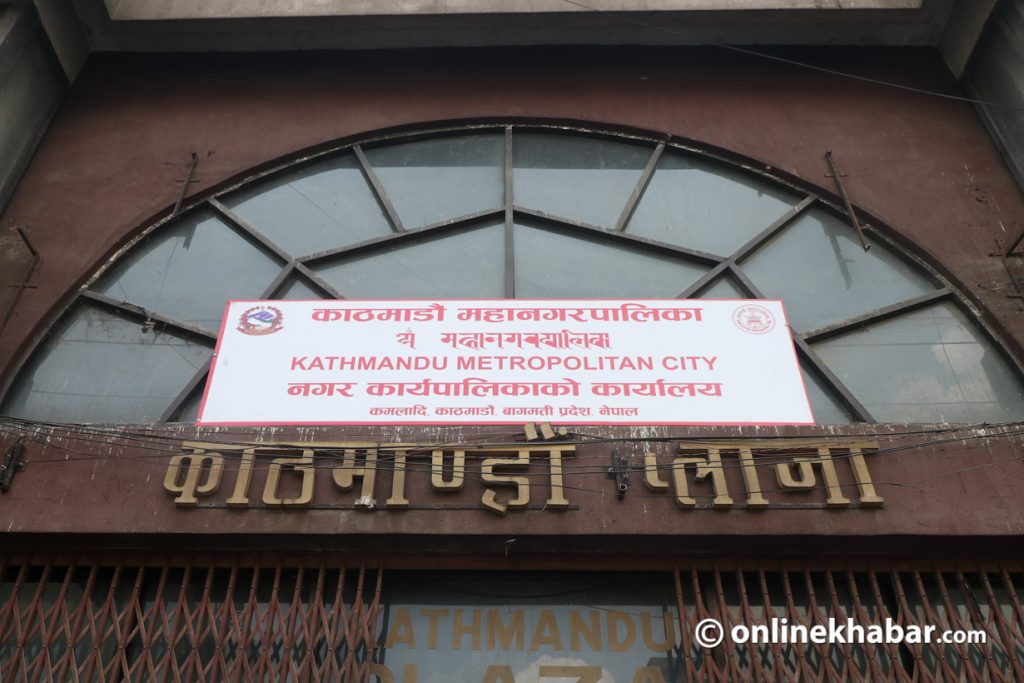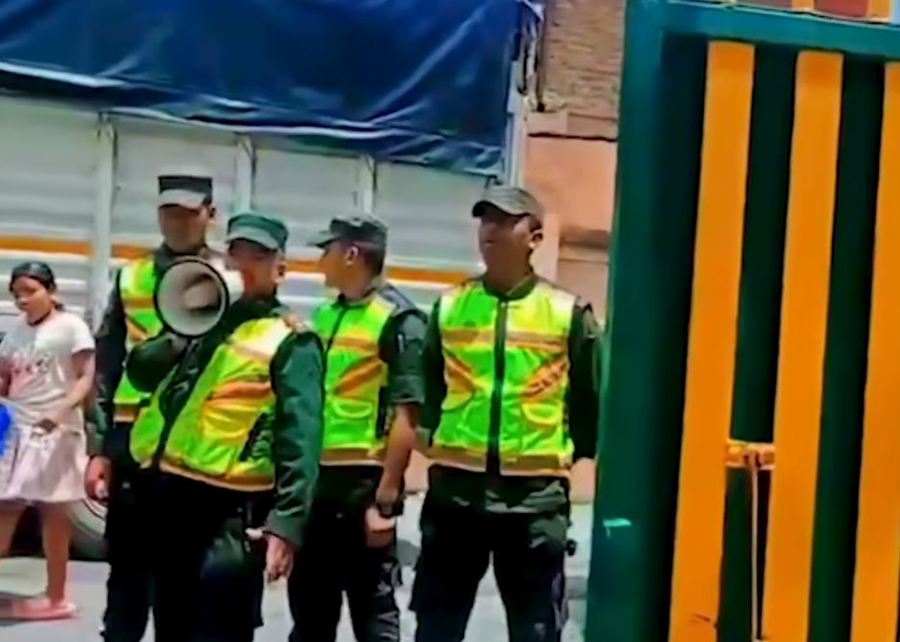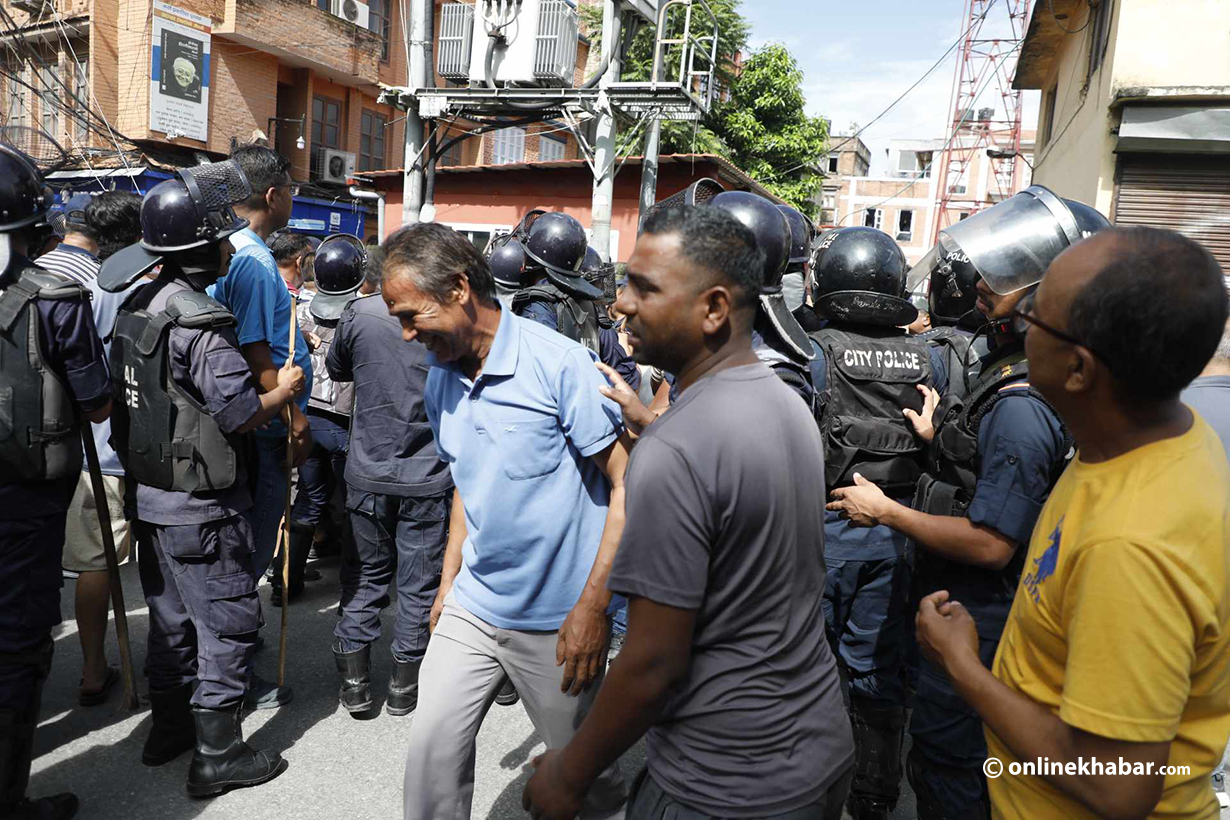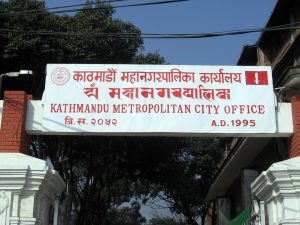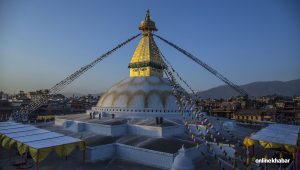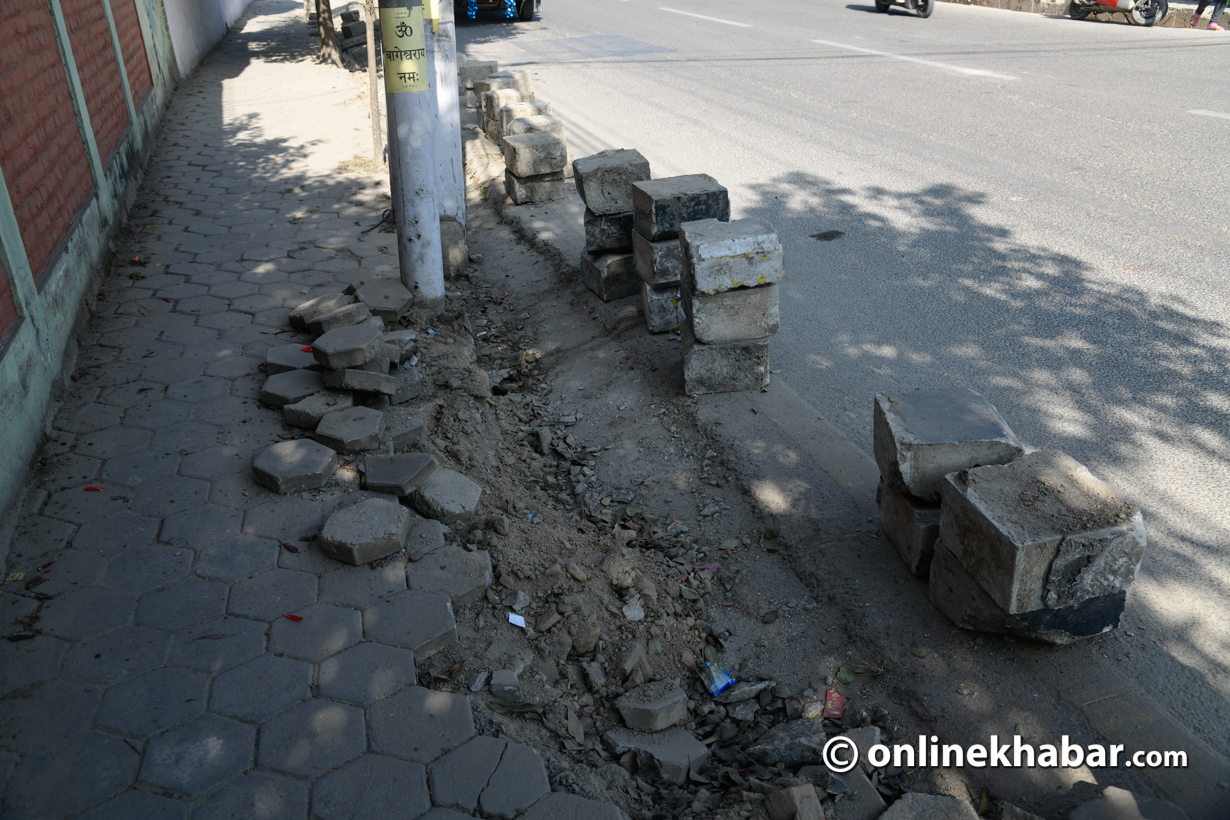
The sidewalks in some areas of Kathmandu Metropolitan City look different as of late. This transformation is a result of the city replacing the existing road tiles.
As the metropolis has started its execution of the Rs 2.5 billion project to replace old interlocking blocks and curve stones in various areas, including Lainchaur, Maharajgunj, Sorakhutte, Balaju, Ratnapark, Bagbazar, Maitidevi, Old Baneshwor, Bhimsengola, Sinamangal, Naxal, Baluwatar, and Sital Niwas, the Department of Roads is beginning to raise questions on the old road tiles and curve stones whereabouts.
Kathmandu Metropolitan City says that it has provided these old road tiles and curve stones to security bodies for support and safekeeping within the Department of Road.
However, the Department says it is unaware of the number of road tiles that have been removed and does not know what the metropolis has done raising concerns about the lack of coordination between the two.
No records of the numbers
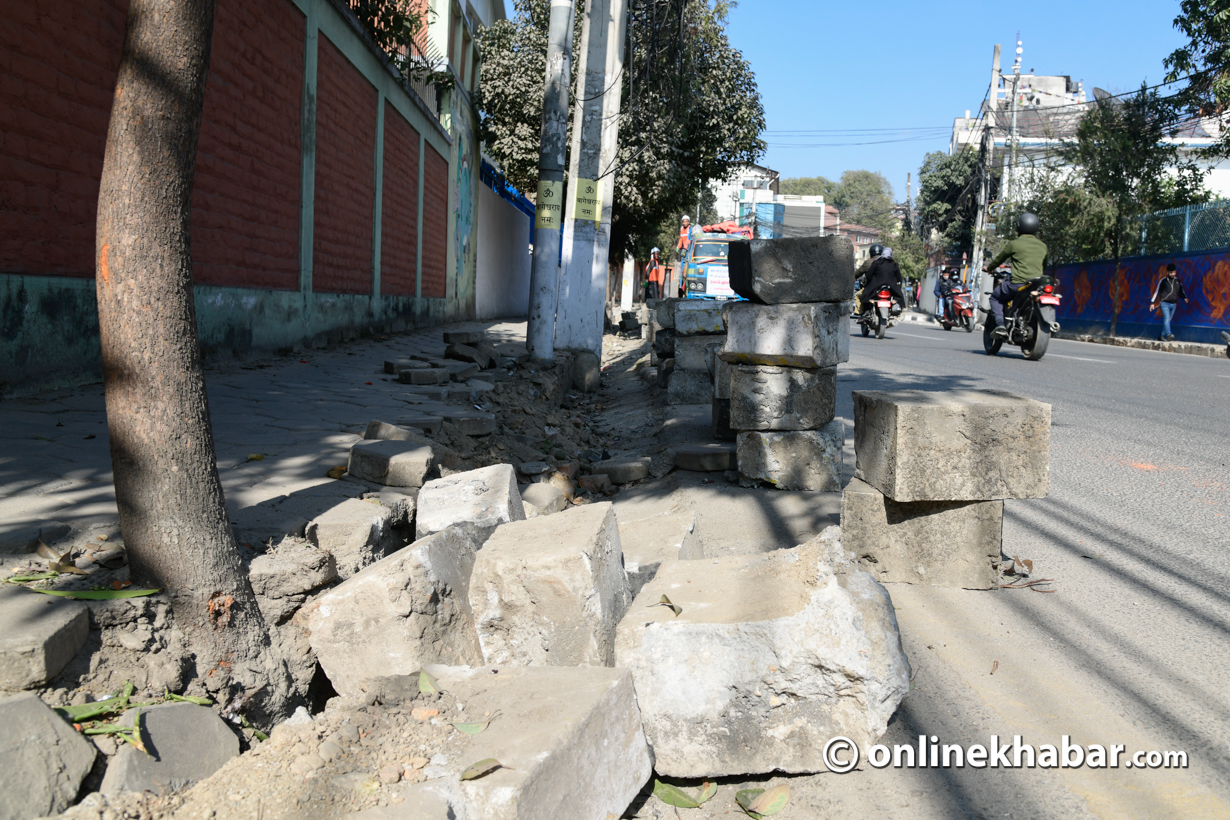
Most of the removed road tiles have the possibility for reuse, attracting interest from various organisations and individuals looking to utilise them to build public parks and parking spaces.
However, the metropolis has encountered challenges in managing the thousands of road tiles and curve stones. What has not helped is the absence of clear directives from the Department which has heightened the risk of potential misuse of these tiles.
Both the metropolis and the Department lack precise information on the number of removed road tiles. There is no confirmation yet on whether these tiles are considered unusable and have been discarded as waste.
Ram Bahadur Thapa, the head of the construction department of the metropolis, said some of the removed road tiles have been repurposed in the construction of a parking space on land owned by the Nepal Trust, facilitated by the metropolis. Additionally, tiles have been supplied to a battalion of the Armed Police Force located in Sinamangal and to the Bhairavnath battalion of the Nepal Army situated in Narayanhiti. Thapa said that the Department was duly informed when providing the tiles to the Armed Police Force.
“The removed tiles are placed in trucks. We have details on how many rounds these trucks made but we do not know the number of tiles handed over to either the Nepal Army or the Armed Police Force,” says Thapa.
The city also does not know how many of the tiles it removed can be reused.
“Tiles that can be reused have been taken to the Department’s office in Pepsicola but there were many which were damaged and could not be reused again,” says Thapa.
Contrary to the city’s claim that it has sent the old road tiles to Pepsicola, the Department maintains that it has not received them. Officials at the Department say the tiles currently present in Pepsicola are the same ones that were previously removed by the Department. Following the Department’s expression of concern regarding the whereabouts of the old tiles that were removed, officials from the metropolis informed that the tiles had been given to security bodies.
“Whether the tiles went to Pepsicola or were allocated to security bodies, the city should have spoken to us and followed due procedure,” said an official from the Department of Roads. “Kathmandu Metropolitan City should have a record of the exact number of tiles that were removed.”
The official says how the old tiles could be reused and potentially generate revenue as well.
Brisk changes
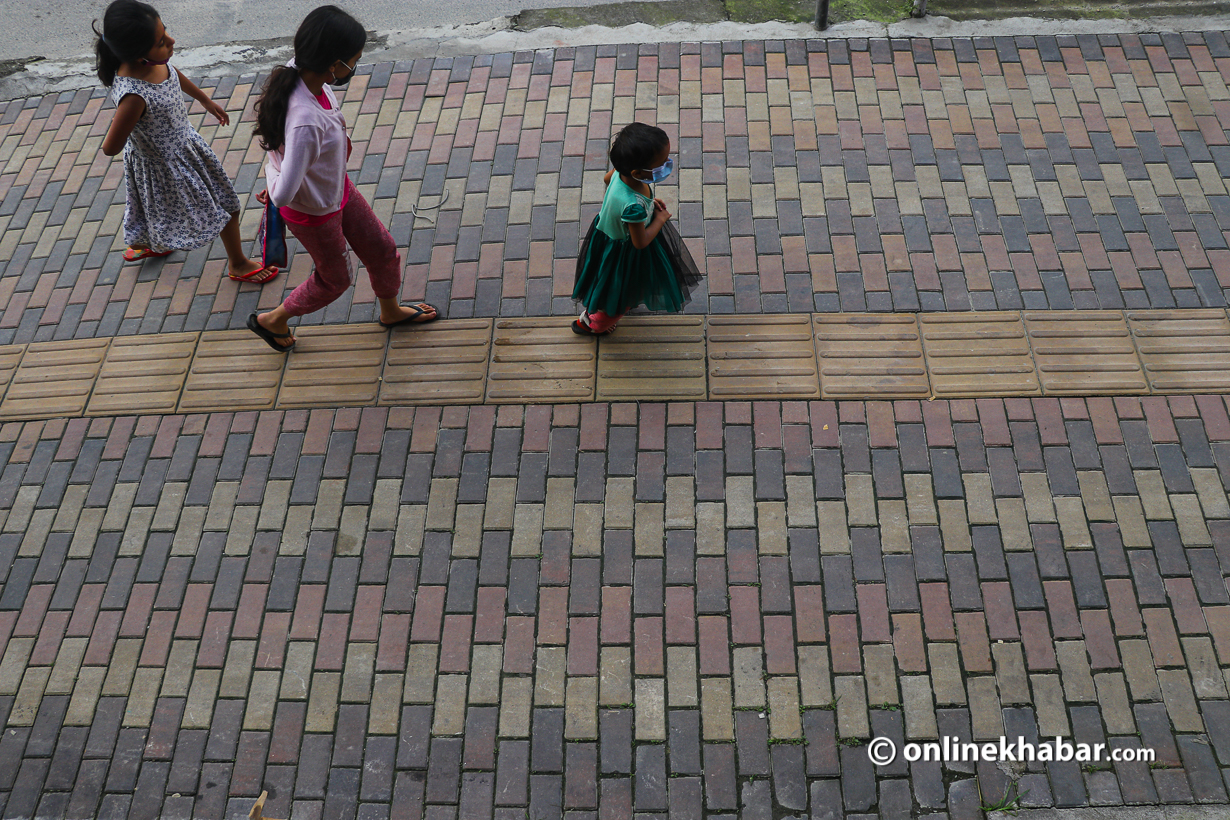
Typically, road tiles are intended to remain in place for at least 15 years. However, due to projects involving drinking water, electricity, telecommunications, and sewage, they are often removed before reaching that lifespan.
Even during the Covid lockdown, tiles were removed from major locations in Kathmandu.
Kathmandu Metropolitan City has devised a plan to install colourful tiles, and the Department has granted permission to the metropolis without taking into account if it needed changing. The Department also did not consider the implications of the existing old tiles when providing permission to the metropolis.
However, the Department iftself is now actively searching for the missing tiles and curve stones, which are in substantial numbers. Following the discovery of tiles being illicitly sold at Rs 6 per piece, the Commission for Investigation of Abuse of Authority initiated an investigation. Subsequently, the Department of Roads has launched an inquiry into the matter in collaboration with the metropolis.
Narayan Datta Bhandari, the division chief of Road Division in Kathmandu, says the Division has inquired with the city regarding the management of old road tiles. According to Bhandari, the city has not provided any records regarding the old tiles and curve stones.
Bhandari says that during construction work, the city should exercise caution about old materials and assess their reusability. If the materials are in suitable condition, he suggests there should be no need for it to be replaced.






